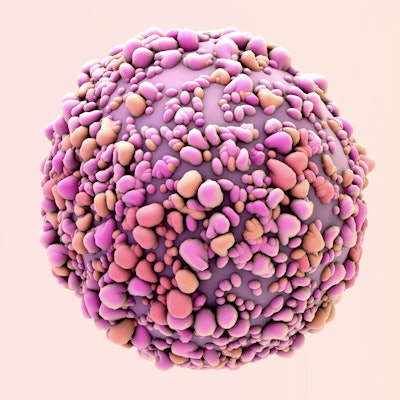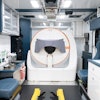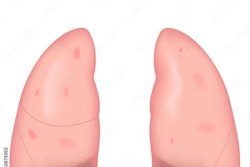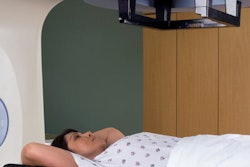
Micro-CT shows promise as an additional tool to standard-of-care assessment of tumor margins during breast-conserving surgery, according to a study published April 11 in the Annals of Surgical Oncology.
But it's not perfect, wrote a team led by Samuel Streeter, PhD, of Dartmouth College in Hanover, NH.
"[Our study showed that] micro-CT identified a similar proportion of margin-positive cases as standard specimen palpation and radiography, but due to difficulty distinguishing between radiodense fibroglandular tissue and cancer, [it also] resulted in a higher proportion of false positive margin assessments," the group noted.
Breast conserving surgery is a key part of early breast cancer treatment, but often women must undergo reexcision procedures if tumor margins are cancer-positive, the authors noted. The reexcision rate in the U.S. due to positive breast tumor margins ranges from 17% to 19%. Standard-of-care assessment of breast tumor specimens consists of visual assessment and palpation plus radiography, but this approach can be limited by overlapping radiodensities of tumor and breast tissues that tend to obscure lesion borders, according to Streeter and colleagues.
What's needed is an effective way to evaluate tumor margins during surgery, the group noted.
"The success of breast-conserving surgery hinges on the ability of the surgical team to assess resection margins thoroughly and rapidly during the initial procedure to avoid costly reexcision procedures that are associated with increased patient distress, worse cosmetic outcomes, and increased medical costs," the team wrote.
Streeter and colleagues conducted a study that assessed the efficacy of micro-CT for evaluating breast tumor specimen margins during breast-conserving surgery. Three readers evaluated 600 surgical specimens in 100 women; of these, 21 were malignant in 14 patients. The investigators then compared the performance of standard-of-care intraoperative margin to micro-CT evaluation.
The results were mixed, as outlined in the table below.
| Comparison of standard-of-care breast tumor margin assessment to micro-CT assessment | ||
| Measure | Standard care margin assessment | Micro-CT margin assessment (range over three readers) |
| Negative predictive value | 89.2% | 86.8% to 87.3% |
| Specificity | 76.7% | 55.8% to 68.6% |
| Sensitivity | 42.9% | 35.7% to 50% |
| False positive rate | 23.5% | 31.4% to 44.2% |
| Positive predictive value | 23.1% | 15.6% to 15.8% |
The investigators noted that if micro-CT had been combined with the standard-of-care approach, three more margin-positive specimens (up to 5 positive margins) could have been identified during breast-conserving surgery.
Although the study results highlight micro-CT's potential for this indication, Streeter's group also called for more research.
"Additional studies are needed to better capture the effectiveness of micro-CT scanning for intraoperative margin assessment during breast-conserving surgery," the team concluded. "These studies should focus on reporting institutional standard-of-care techniques for intraoperative margin assessment, along with details related to the quality of micro-CT scanning, how and when radiological interpretation is performed, and the duration allowed for image interpretation so that differences between published breast-conserving surgery specimen datasets and reported margin assessment performances can be better understood and characterized."





















